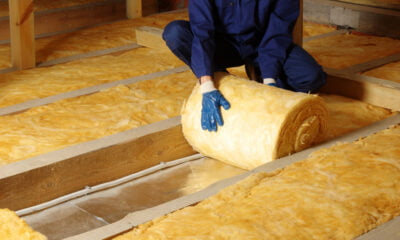

Environment
The Importance Of Evaluating The Most Eco-Friendly Decking Options
If you are looking to build a deck for your home and want to know about the greenest options available, then this post is for you.
What Does Green Actually Mean?
The word “green” has become a buzzword, along with “small batch,” “eco-friendly,” and “locally sourced”. But, when one stops to think about it, what actually makes building materials or a construction project green?
In general, greener products have a less negative impact on the environment than products that are not considered green. In some cases, the effect on the environment can be positive. The EPA considers the entire lifecycle of a material when determining its sustainability and impact on the environment.
Generally, this lifespan goes from origin to disposal. In regards to decking material, this would mean looking at a material’s sustainability and eco-friendliness from manufacture to demolition and disposal. Below is a list of the greenest products available for constructing your deck.
Natural Wood
According to the EPA, if you want to use natural wood for your deck, you should consider the following environmental attributes:
1. Sustainably Harvested
Was the wood sustainably harvested? Sustainable harvesting prioritizes practices that allow for a tract of land to regenerate its tree cover quickly and healthily.
2. Locally Harvested
Was the wood locally harvested? Lumber that originates from far away may be cheaper to purchase at the lumberyard, but the environmental costs of transporting it are not often considered by the consumer. If the wood originated from overseas, then the carbon footprint of transporting the material will be much higher than if you requested local lumber.
3. Treated Wood?
What was used to treat the wood? Depending on the performance requirements of the lumber you need, the wood may need to be treated with insect repellants or preventative sealants to protect from infestation and wood rot. The types of chemicals used will affect you and the surrounding ecosystem.
Toxic and volatile chemicals like CCA (chromated copper arsenate) were used regularly to treat wood, but are no longer considered safe. Check out this resource page for information on how to properly handle and remove wood that has been treated with CCA.
4. Reclaimed Lumber
Reclaimed lumber refers to the growing trend of harvesting and refurbishing materials from demolition sites. Often the recycled items are “up-cycled” due to their antique nature and historical value. Using recycled materials in your construction projects reduces the environmental cost in a number of ways.
Little to No Processing or Harvesting Costs
Reclaimed lumber has already been harvested and processed. Usually, the materials need only minimal reprocessing to bring them back to consumer-grade.
Because this wood is older – meaning it comes from old-growth forests – the wood is stronger and more durable.
Composite and Plastic Materials
Composite Decks
Composite decking materials are a hybrid material made of a combination of plastics and wood fiber. They are more resilient to environmental stressors than traditional wooden decks. However, not all composite decks are made equally, especially as far as the environment is concerned.
Next to Impossible to Recycle
Due to the nature of the composite material, separating the wood from the plastics is an impractical and costly feat that would ultimately be less energy efficient than throwing the refuse in a landfill.
The Green Workaround
However, you can use composite decking materials that are considered green. If you choose a composite material that is made from mostly recycled materials – which many commercially available composites are – then your deck can be considered green.
PVC Decks
PVC decking, is made entirely of plastic and is 100% recyclable. These types of decks are easier to maintain than wooden decks but are vulnerable to higher temperatures and are difficult to repair.
The Verdict – Choose 100% Wood or 100% Plastic
Composite materials are a great engineering feat and can be considered a green material if they were made of mostly recycled materials. However, since they cannot be recycled after manufacturing, it seems that going with all wood or all plastic is the greenest choice you can make.
Wood or Plastic, Then?
Both can be environmentally friendly. The question boils down to what kind of maintenance are you looking to put into your deck. Wooden decks are much higher maintenance and require annual if not bi-annual attention and care. Whereas plastic or PVC decks don’t really require any annual maintenance and are very easy to clean.
Sustainable Construction Projects Depend on the Right Materials
It is important to keep in mind that the sustainability and eco-friendliness of a wooden deck depend on how it was harvested, processed and shipped. If the lumber is local and if it has been certified as harvested sustainably, and if you are willing to take great care of it, then wood is the way to go. However, if this is not the case, then plastic, being 100% recyclable is the way to go.
































